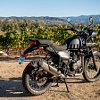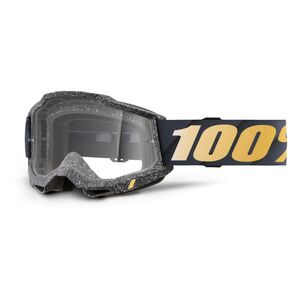If you’re thinking this motorcycle looks a lot like the Royal Enfield Himalayan from last year, or two years ago, that’s understandable. There are a handful of changes for this 2022 model, and you have to look closely to find them.
There are some good reasons for keeping the foundation of the bike the same, not least of which being our very own reviews here on Common Tread. I used the words “delightful” and “charming” the last time I rode one. Spurgeon was a little less enthusiastic, but even he admitted in his first-ride review in 2018 that it is “approachable and affordable.” Strong words from a strong man.
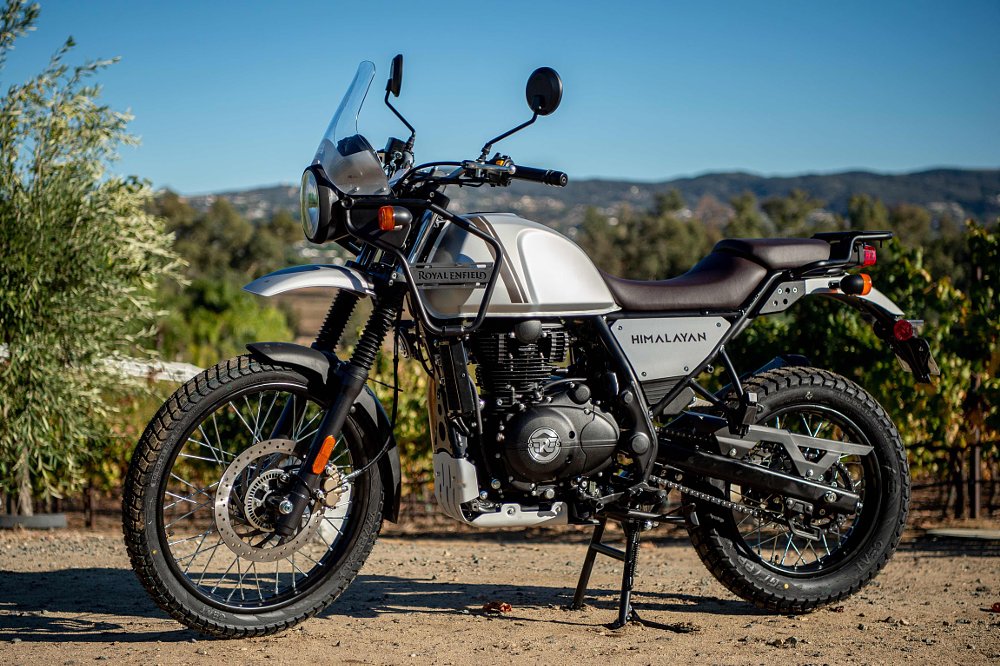
So, for 2022 the Himalayan retains the lopey-but-willing 411 cc air-cooled single, five-speed transmission, double-cradle frame and basic architecture from the bike that debuted a few years ago. There’s a 21-inch front wheel and around eight inches of ground clearance, a four-gallon gas tank, a simple anti-lock brake system, and dash instruments that use analog needles to show engine revs and speed. It’s a throwback. An adolescent Kawasaki KLR650, with a price to match.
The updates
Progress, as we’ve come to know it, is an area where Royal Enfield needs to be careful. Rest on its laurels and insatiable North Americans might get bored with the product. But, add too many new features and the price will balloon above what the customer has come to expect. At $5,299 the 2022 model is $300 more expensive than the previous model and it’s arguably fair to want to see that reflected in the bike’s capability. The new pieces and upgrades on this version of the Himalayan are pointed in a specific direction, even if they’re modest, and that is toward touring comfort.
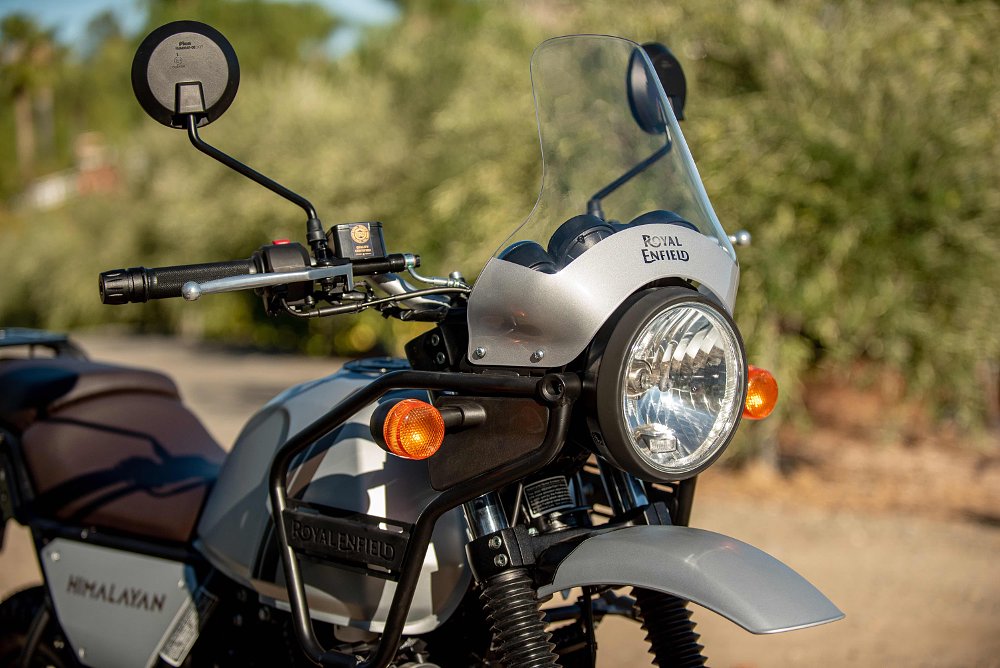
The big news is the addition of Tripper, a navigation module added to the cockpit that connects to the rider’s phone via Bluetooth and offers turn-by-turn directions powered by Google Maps. (This is the same system that Greaser tested on Enfield’s Meteor 350 earlier this year.) Next, Enfield turned to rider comfort. “Revised seat cushioning” aims to make the saddle less of a pain point, the windshield is bigger, the tubular racks flanking the gas tank and fork have been “ergonomically adjusted” to provide more legroom, and the rear rack has been made both lower and stronger, for easier leg swingin’ and more cargo carryin’, respectively.
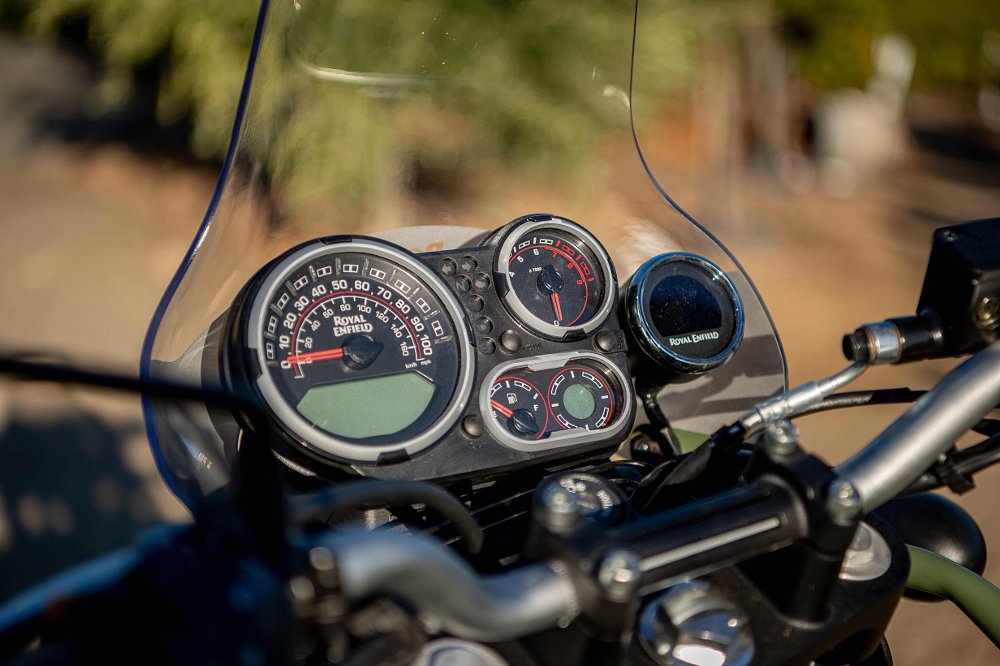
As someone who complained specifically about the seat on the previous version of the Himalayan — when we tested it against CSC’s RX4 — that’s an update I can appreciate. Occasionally bumping my knees on the front side racks didn’t seem notable on the previous version. Nevertheless, Royal Enfield was thinking critically and changed the shape of the racks to offer a few more inches of knee room to lanky riders. The same goes for the windscreen, which I thought provided a decent amount of weather protection considering the size of the bike, but Enfield made it wider at the bottom. If anything surprised me on this list of upgrades it was the lack of attention paid to the front brake. Then again, no need to judge a book by its cover. I was about to read it.
Chasing the name
Even with an updated saddle, the seat height is listed at the same 31.5 inches and that means if you’re anywhere near six feet tall you’re likely to find the Himalayan more than approachable. It’s narrow everywhere, especially in the middle, which makes the stand-over height especially reasonable. The bike feels just about as similar as it looks to the old one at first — a little tight on legroom for taller folks, but otherwise a genuinely comfortable riding position. ADV Lite, in appearance and experience.
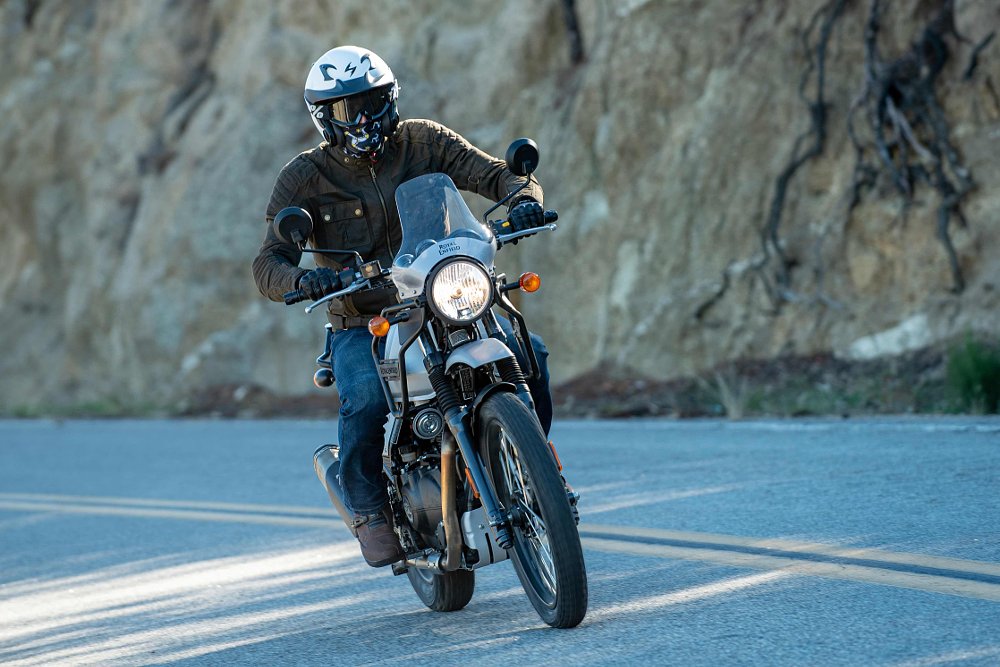
On two-lane blacktop, the Himalayan chugs along beautifully at 55 mph, around 4,500 rpm, seemingly happy enough to go all day. Upping the speed to 70 to 75 mph means crossing the 5,000-rpm threshold and the dynamic shifts to be a little more frenetic. It will still go all day, even at a full canter, but the mirrors start to get blurry and there’s definitely more strain on the little burro’s heart. After a while you’ll probably wish you could turn off the pavement onto, say, a wandering network of sandy and bumpy dirt roads.
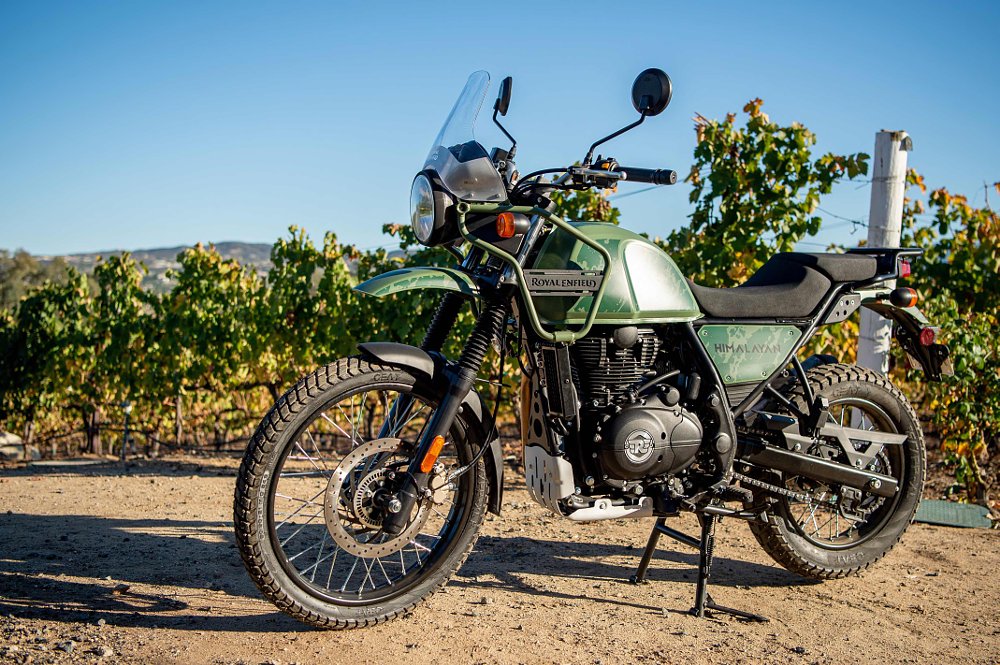
This is Himalayan country. However, before I wax poetic about the glory of freedom and the wind in my hair, don’t mistake this machine for a dirt bike. It likes to tackle off-road sections of the earth in the same way it does the smooth bits — which is to say, gently. I trotted down mile after mile of rocky and undulating roads in second and third gear with not a care in the world. Even when the climbs got a little steep and it seemed like first gear was in order, the Himalayan just kept thumping away, digging its little hooves in and plodding up another hill.
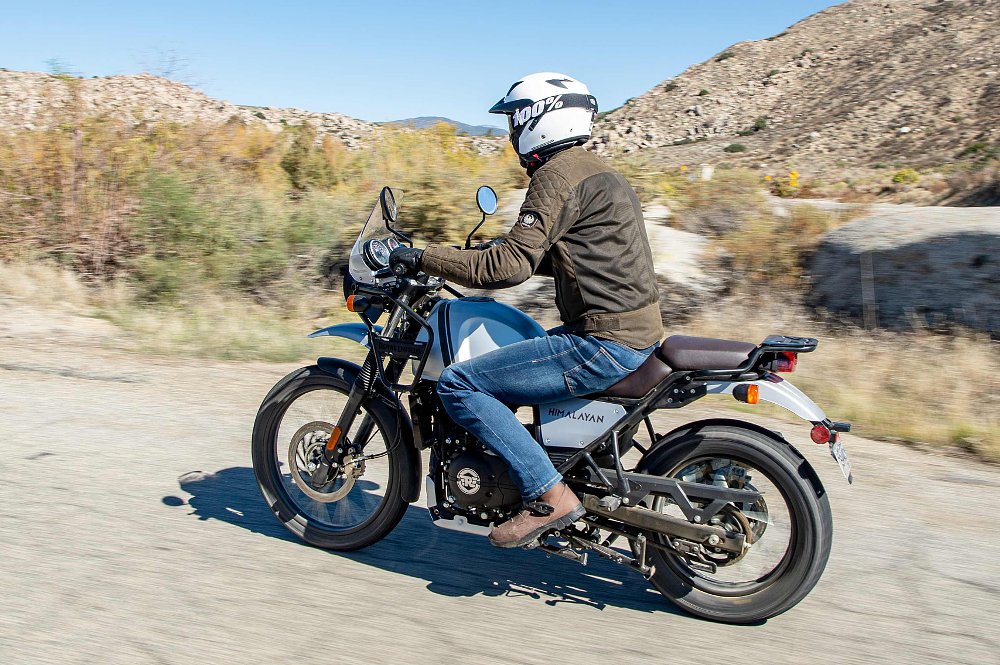
More advanced off-road riders will eventually start to push it, to slide into corners or catch air off a particularly sharp water bar laid across the road. The button labelled “ABS” on the dash almost encourages this, allowing the rider to disable the rear anti-lock system (and therefore become a professional racer). The Himalayan plays the game and hops along with more urgency. But it’s sort of like playing fetch with an old dog — it's reaching to fulfill an instinct without having the muscle tone or the energy for it. If all goes well, after a few jumps and g-outs slap the centerstand on the ground, the ambitious Dakar wannabe will realize that this simply isn't the bike or the place for these antics. They will channel their inner retiree and sit back down to enjoy the scenery.
This Himalayan is as capable and willing as ever, and for that matter has the same limits. In fact, a few more of the same limits than I was expecting, considering the updates to the 2022 model. I think maybe the seat looks the same and is the same height because it’s mostly the same seat, which is a shame because it’s too soft to be comfortable on a long haul. The windshield is wider at the bottom and yet didn’t provide any discernible difference in weather protection. That’s not a huge problem as far as I’m concerned, since I thought it was pretty good before. Still, I found it odd. Moving the bottom of the side racks to avoid the kneecaps of long-legged adventurers was a good call; if you’re less than six feet, two inches tall, I wouldn’t sweat it either way.
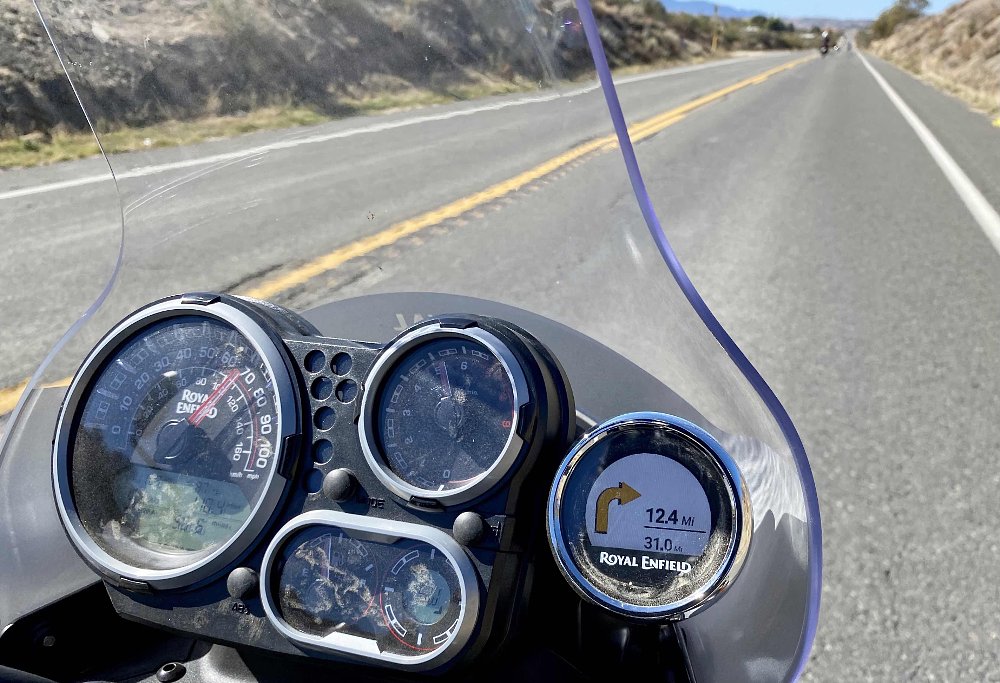
One upgrade to the Himalayan that’s a real hit in my book is the Tripper device. It’s an unassuming little chrome-ringed gadget on the right side of the dash, which requires an amount of app downloading and terms-and-conditions accepting that I can only assume will eventually give us all a terminal disease. At that point, it connects to a phone and provides a searchable map to plug in a waypoint. A color screen indicates with basic arrows how far the next turn is, and it signals what the subsequent direction will be, as well as total mileage to the destination. It’s easy to wish that it showed the road name or service bars or other little tidbits of data. For basic navigation, though, it’s uncomplicated and efficient.
Nearing the summit
All in all, I stand by my previous comments about this Royal Enfield. The Himalayan is delightful, and it is charming. But, to be more specific, it only creates those feelings in me by fitting into a larger dialogue of emotions. It is not fast, or agile, or premium. The valves are supposed to be checked every 3,100 miles and it’s possible that you’ve never heard of the company that makes the tires. It lacks most of the performance metrics I would normally associate with bikes that I enjoy, and that’s OK. (Except for the front brake, which is quite bad and should really be addressed on the next go ‘round.)
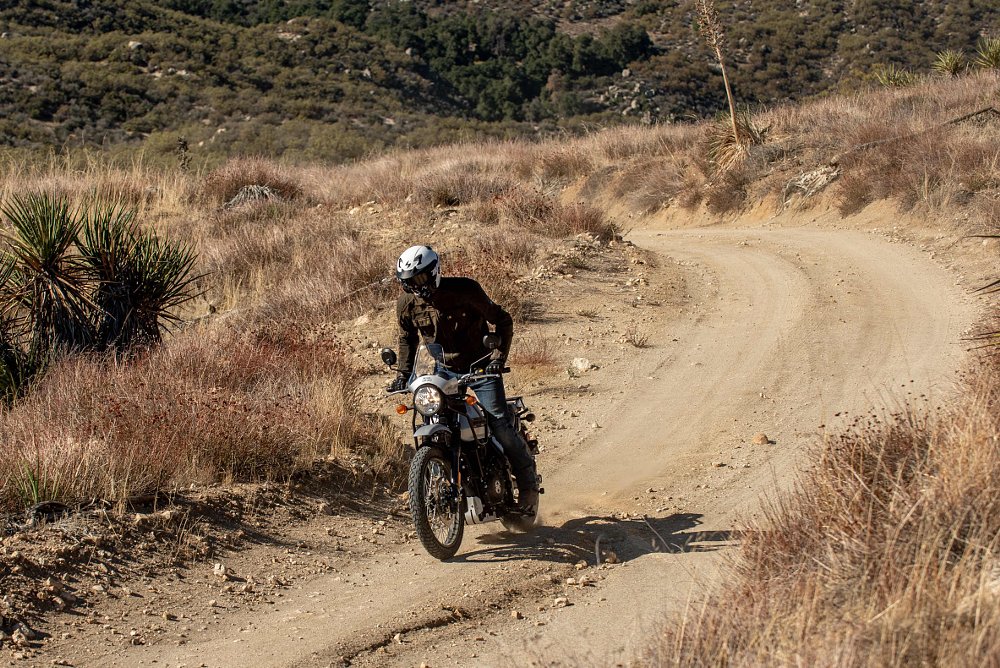
The reason that almost none of that bothers me is that there is no pretension. From the high-idle choke lever on the handlebar to the analog gauges and halogen headlight, the Himalayan never seems to ask for any praise or even be striving to be anything other than what it is. Every trip is part motorcycle ride, part museum exhibit, in the best possible way. A Honda CRF300L is a better dirt bike and a Kawasaki Versys-X 300 is a better touring bike. The thing is, any given Himalayan owner probably won’t care, because this bike is unapologetic. It’s the baby KLR650 the motorcycling world never knew it wanted. And for 2022 it’s better, if you look closely enough.
| 2022 Royal Enfield Himalayan | |
|---|---|
| Price (MSRP) | $5,299 |
| Engine | 411 cc, air-/oil-cooled, two-valve, single cylinder |
|
Transmission, final drive |
Five-speed, chain |
| Claimed horsepower | 24.3 @ 6,500 rpm |
| Claimed torque | 23.6 foot-pounds @ 4,250 rpm |
| Frame | Steel double-cradle |
| Front suspension | Gabriel 41 mm fork; 7.8 inches of travel |
| Rear suspension | Gabriel single shock, adjustable for spring preload and rebound damping; 7.0 inches of travel |
| Front brake | Bybre two-piston caliper, 300 mm disc with ABS |
| Rear brake | Bybre single-piston caliper, 240 mm disc with ABS |
| Rake, trail | 26.0 degrees, 4.4 inches |
| Wheelbase | 57.7 inches |
| Seat height | 31.5 inches |
| Fuel capacity | 4.0 gallons |
| Tires | CEAT GRIPP XL, 90/90-21 front, 120.90-17 rear |
| Claimed weight | 439 pounds |
| Available | Now |
| Warranty | 24 months |
| More info | royalenfield.com |






